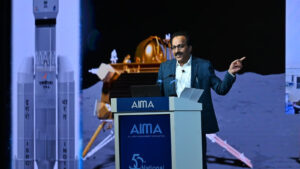The Indian Space Research Organization, known as ISRO, deals with more than 100 cyber attacks every day. The Chairman of ISRO, S Somanath, shared this information during a recent cybersecurity event in Kochi.
He explained that not only ISRO but also other organizations face hundreds of attempts by hackers to break into their computer systems. However, ISRO has strong defenses in place, both in terms of hardware and software, to prevent these attempts from causing any real harm. These hacking attempts are like tests to see if they can get into ISRO’s computer network, but so far, none of them have succeeded.
ISRO has multiple layers of security, including firewalls and other security measures. These measures ensure that any hacking attempt is stopped before it can breach their systems. Somanath expressed confidence that they have successfully protected their systems and prevented any unauthorized access.
He also highlighted the importance of keeping the software on their satellites and rockets secure, especially for critical missions like moon landings. If the software were compromised, it could lead to serious problems during these missions.
In essence, ISRO is working diligently to keep its digital systems safe from cyber attacks. Their strong security measures have so far proven effective in safeguarding their operations and data, which is crucial for their space missions and overall mission success.
Somanath emphasized the importance of India having a strong understanding of cybersecurity and a knowledge base to protect itself. He explained how even a small program related to landing on the moon is incredibly complex and comes with significant risks.
The ISRO chief also discussed the challenges of improving the safety systems of a satellite once it’s already in space. He pointed out that when ISRO launches a communication satellite, it’s expected to stay in space for 15 years. During this long period, there are numerous changes needed, such as updating software, upgrading operating systems, and improving hardware. These ongoing changes present a major challenge.
“After 15 years, many satellites become vulnerable because technology gets outdated. You see, it’s easy to keep your mobile phones secure by regularly updating their operating systems. But when it comes to satellites in space, it’s not possible to remotely upgrade their software. The hardware in older satellites is particularly susceptible to security risks. Even if we build new satellites with the latest technology, they will also become outdated over time. So, it’s an ongoing problem.”
“The satellites launched a decade ago are especially vulnerable because technology changes so rapidly, and we can’t update the hardware or software that’s already up there in space. We need to make sure that we have the capability to update the software or even make changes to the hardware from the ground by sending commands,” he explained.
